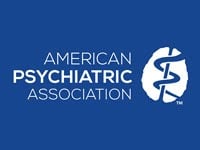APA President Paul Summergrad, M.D., today reacted to the news that national drugstore chain CVS...
Psychiatrists Urged to Increase Awareness of Domestic Violence
 |
Robinson said risk factors for being a victim of domestic violence include observing violence between parents in the home when young; having attitudes that accept violence and gender inequality; and experiencing marital conflict or disruption. “Substance abuse and low self-esteem have been noted as increasing vulnerability to domestic violence; however, they may be a consequence of the violence rather than a cause of the violence,” she said. “Physically there may be outward signs of violence, such as bruises or fractures. If a woman is pregnant—violence continues to occur during pregnancy, often directed to the women’s abdomen—there may be at increased risk of miscarriage, premature deliveries, or small-for-date babies.”
Robinson’s advice to clinicians: “Always ask about the presence of conflict in the family when taking a history, as women find it difficult to report unless they get the sense that they will be heard and not ignored or blamed. Having pamphlets or posters about domestic violence in the waiting room can provide an atmosphere that encourages women to report. It is important for the psychiatrist to have some practical information about safety measures such as domestic violence hotlines and where to go if the woman has to leave.
Domestic violence is not exclusively a problem between heterosexual couples. A recent study found that same-sex domestic violence affects one-quarter to nearly three-quarters of lesbian, gay, and bisexual individuals—figures that equal or exceed those for straight couples. “Domestic violence can occur in LGBT families with the same frequency as it does in straight ones,” said psychiatrist Jack Drescher, M.D., past president of the Group for the Advancement of Psychiatry. “Clinicians need to be alert to domestic violence presentations in their clinical practices and to understand what kind of interventions may be helpful to their patients and their families."
Expressing support for education and outreach efforts on domestic violence, APA President Paul Summergrad, M.D., stressed that, "Domestic violence can lead to serious health problems, including anxiety, depression, posttraumatic stress disorder, and substance abuse, as well as an increased likelihood of general medical problems such as headaches, chronic pain, and poor physical health. Domestic violence is not limited by economic status, race, national origin, religion, gender, or sexual orientation.... APA strongly advocates for prevention and better detection of domestic violence, improved treatment of victims and offenders, and expanded research into causes, consequences, and prevention.” APA has posted domestic violence resources at http://psychiatry.org/domestic-violence.
APA's is holding its next #YourMH @twitter chat in observance of Domestic Violence Awareness Month. Join your APA colleagues in responding to questions and comments from the public on Friday, October 24, from noon to 1 p.m. ET. To join, use #YourMH (stands for "Your Mental Health"), @apapsychiatric, or #DVAM14. If you haven't created a Twitter account yet, click here to do so now. Here's your chance to share your knowledge and insights.





